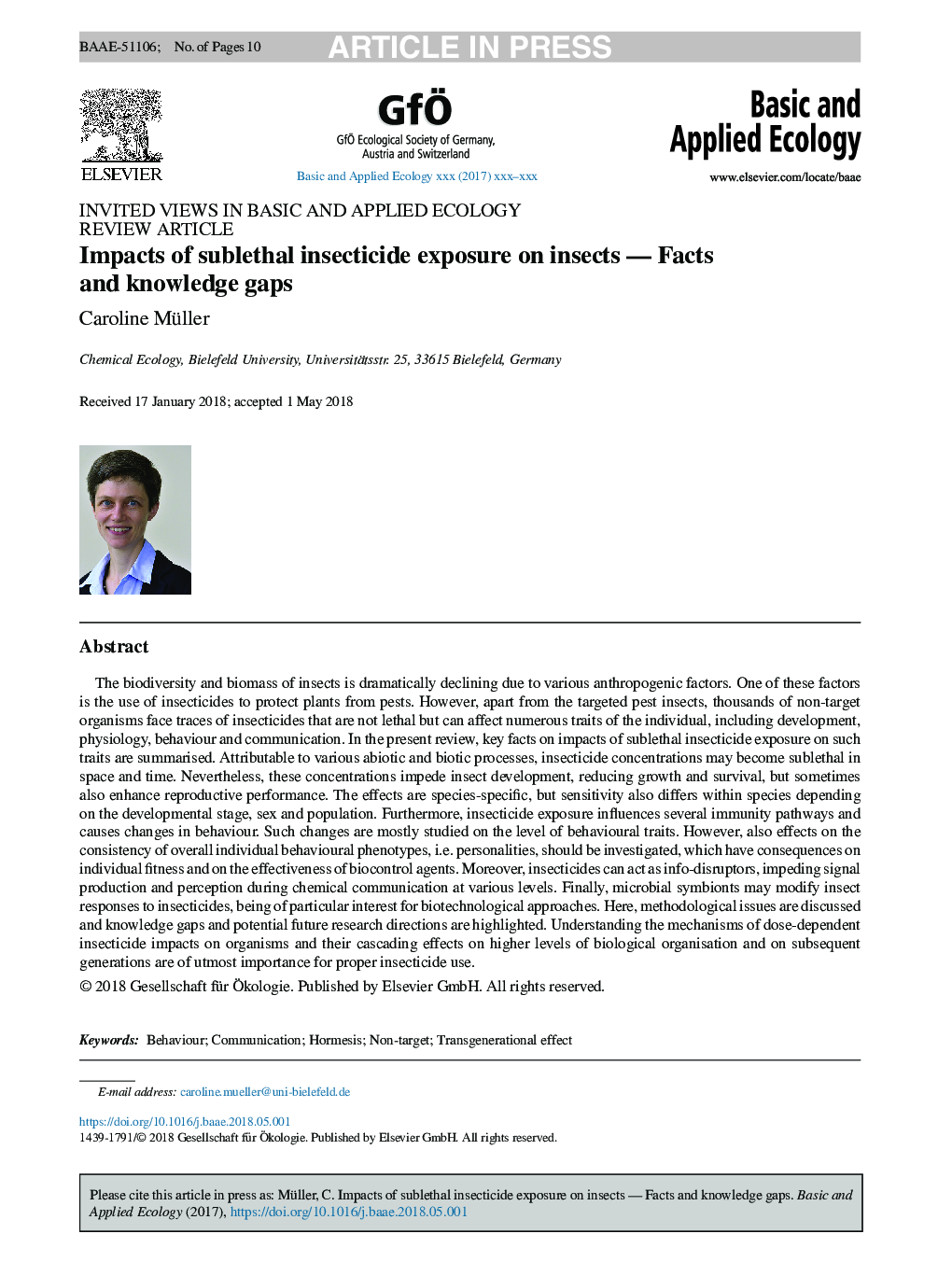| Article ID | Journal | Published Year | Pages | File Type |
|---|---|---|---|---|
| 8846966 | Basic and Applied Ecology | 2018 | 10 Pages |
Abstract
The biodiversity and biomass of insects is dramatically declining due to various anthropogenic factors. One of these factors is the use of insecticides to protect plants from pests. However, apart from the targeted pest insects, thousands of non-target organisms face traces of insecticides that are not lethal but can affect numerous traits of the individual, including development, physiology, behaviour and communication. In the present review, key facts on impacts of sublethal insecticide exposure on such traits are summarised. Attributable to various abiotic and biotic processes, insecticide concentrations may become sublethal in space and time. Nevertheless, these concentrations impede insect development, reducing growth and survival, but sometimes also enhance reproductive performance. The effects are species-specific, but sensitivity also differs within species depending on the developmental stage, sex and population. Furthermore, insecticide exposure influences several immunity pathways and causes changes in behaviour. Such changes are mostly studied on the level of behavioural traits. However, also effects on the consistency of overall individual behavioural phenotypes, i.e. personalities, should be investigated, which have consequences on individual fitness and on the effectiveness of biocontrol agents. Moreover, insecticides can act as info-disruptors, impeding signal production and perception during chemical communication at various levels. Finally, microbial symbionts may modify insect responses to insecticides, being of particular interest for biotechnological approaches. Here, methodological issues are discussed and knowledge gaps and potential future research directions are highlighted. Understanding the mechanisms of dose-dependent insecticide impacts on organisms and their cascading effects on higher levels of biological organisation and on subsequent generations are of utmost importance for proper insecticide use.
Related Topics
Life Sciences
Agricultural and Biological Sciences
Animal Science and Zoology
Authors
Caroline Müller,
